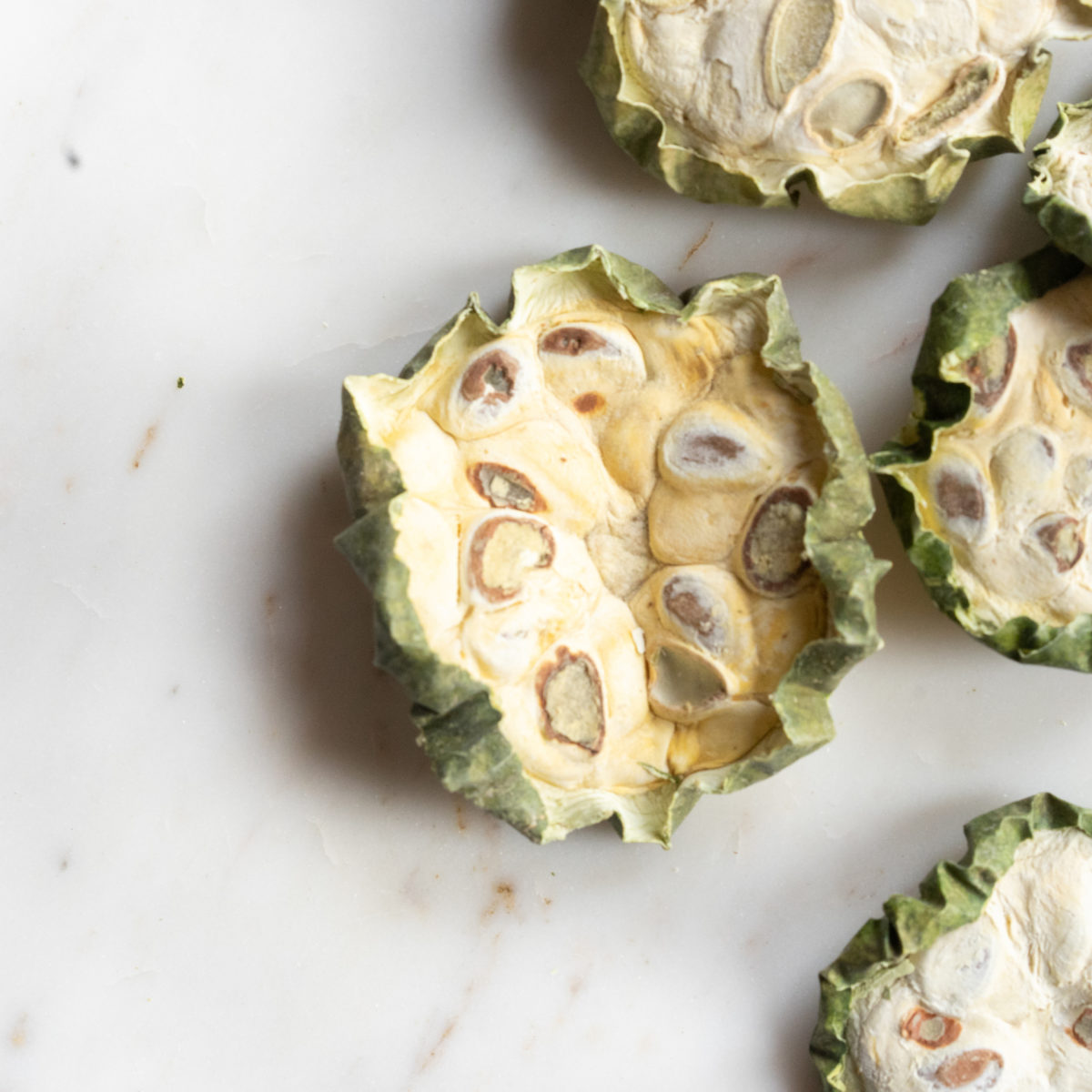
COMMON NAME (Chinese Name)
Chinese Cucumber (Guā Lóu)
BOTANICAL NAME
Trichosanthes Kirilowii
USES
Chinese cucumber extract (and other hot water decoctions) have some demonstrable antimicrobial effects, especially when allowed to ferment. As a result, topical and oral applications may help treat and control a number of common bacterial infections, including E. Coli, salmonella, staph infections, and listeria.
Additionally, Chinese cucumber supplements have significant effects on blood sugar levels, showing promise for use as a nutraceutical diabetes treatment. Even absent diabetes and other metabolic disorders, these hypoglycemic effects may help manage a “sugar high,” though there is no formal research into the hypoglycemic effects on non-diabetic users.
PREPARATION & ADMINISTRATION
Almost all parts of the plant can be used for medicinal purposes (including the roots, seeds, stems, fruit, and peel). Common preparations include harvesting, then peeling and drying, all previously-mentioned parts, though herbal shops often carry Chinese cucumber supplements in powdered and encapsulated forms.
Though medicinal effects are only associated with this specific plant, there are several related species of cucumber often mistakenly mixed into or substituted for true/pure Chinese cucumber (though with few ill-effects besides a dramatic loss of or absence of medicinal effectiveness).
PRECAUTIONS
Women who are pregnant or trying to become pregnant should not take Chinese cucumber supplements of any kind, as they may induce a miscarriage. What’s more, due to their androgenic effects, taking Chinese cucumber derivatives may cause common androgenic side-effects, like acne, decrease in sex drive, hair loss and thinning, and trouble sleeping.
Otherwise, oral Chinese cucumber fruit and seed supplements seem largely safe for use, with little available information concerning contraindications or side-effects other than diarrhea/stomach discomfort and changes to blood sugar levels. Chinese cucumber root, however, is a controversial supplement, as it has been linked to allergic reactions, prescription drug interactions, and other severe side-effects including seizures. People who choose to take Chinese cucumber root extracts are encouraged to talk to their doctor beforehand, and are advised that ingesting the powdered starch-derivative of Chinese cucumber roots is likely the safest approach to administration while ingesting Chinese cucumber root extracts is by far the most dangerous.
You should consult with a certified herbalist, physician or other qualified healthcare professional before taking Chinese cucumber.
REFERENCES
“Androgen (Oral Route, Parenteral Route, Subcutaneous Route, Topical Application Route, Transdermal Route) Side Effects.” Mayo Clinic, Mayo Foundation for Medical Education and Research, 1 Jan. 2020, https://www.mayoclinic.org/drugs-supplements/androgen-oral-route-parenteral-route-subcutaneous-route-topical-application-route-transdermal-route/side-effects/drg-20069341.
Grossberg, George T., and Barry Fox. The Essential Herb-Drug-Vitamin Interaction Guide: the Safe Way to Use Medications and Supplements Together. Broadway Books, 2007.
Jeong, et al. “Trichosanthes Kirilowii Exerts Androgenic Activity via Regulation of PSA and KLK2 in 22Rv1 Prostate Cancer Cells.” Pharmacognosy Magazine, vol. 13, no. 49, 2017.
Lo, Hsin-Yi, et al. “Hypoglycemic Effects of Trichosanthes Kirilowii and Its Protein Constituent in Diabetic Mice: the Involvement of Insulin Receptor Pathway.” BMC Complementary and Alternative Medicine, vol. 17, no. 1, 2017, doi:10.1186/s12906-017-1578-6.
Saboo, et al. “ANCIENT AND RECENT MEDICINAL USES OF CUCURBITACEAE FAMILY.” International Journal of Therapeutic Applications, vol. 9, 2013, pp. 11–19.
Wen, Yu-Ling, et al. “Effects of Fermentation Treatment on Antioxidant and Antimicrobial Activities of Four Common Chinese Herbal Medicinal Residues by Aspergillus Oryzae.” Journal of Food and Drug Analysis, vol. 21, no. 2, 2013, pp. 219–226., doi:10.1016/j.jfda.2013.05.013.
